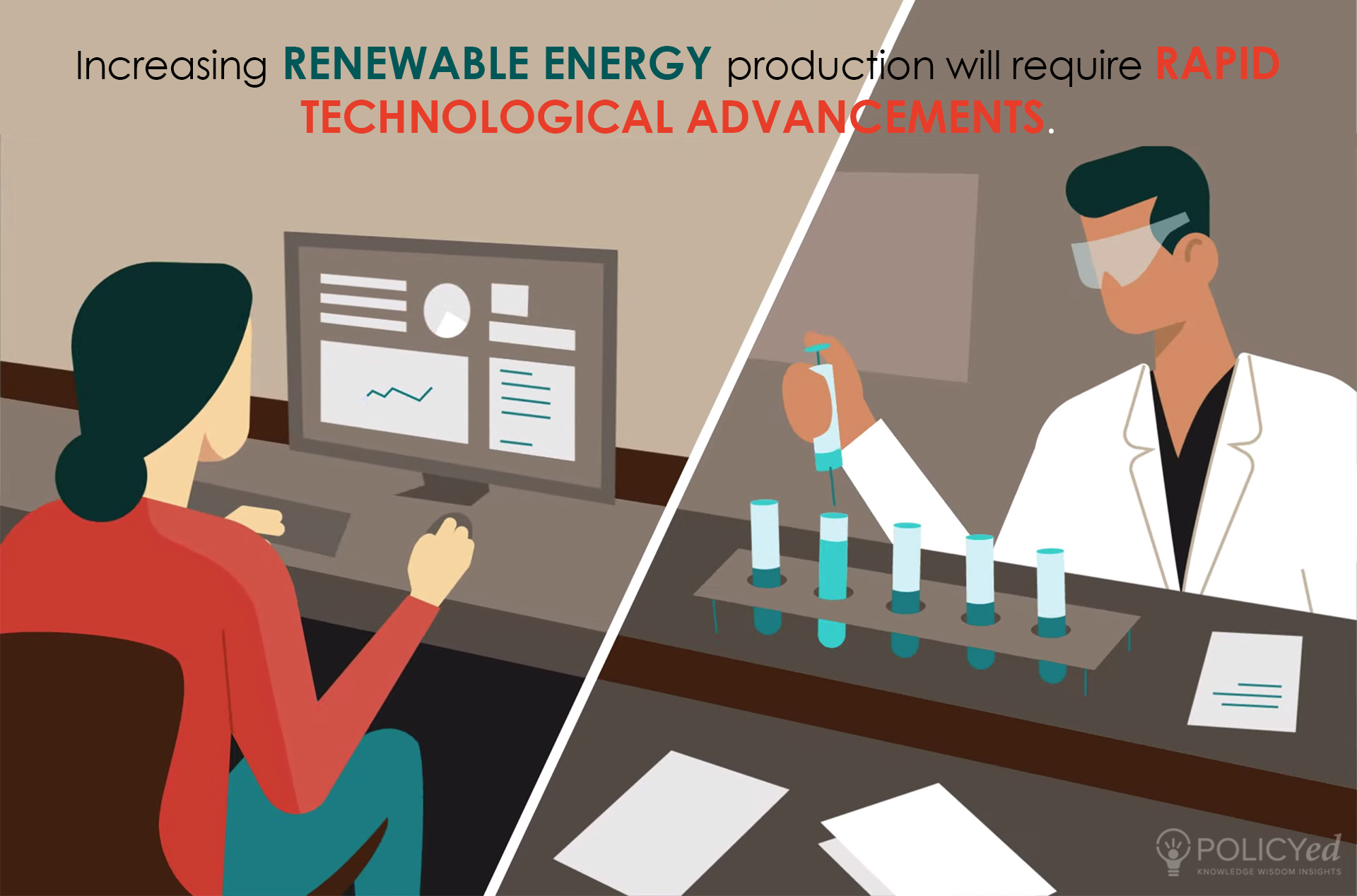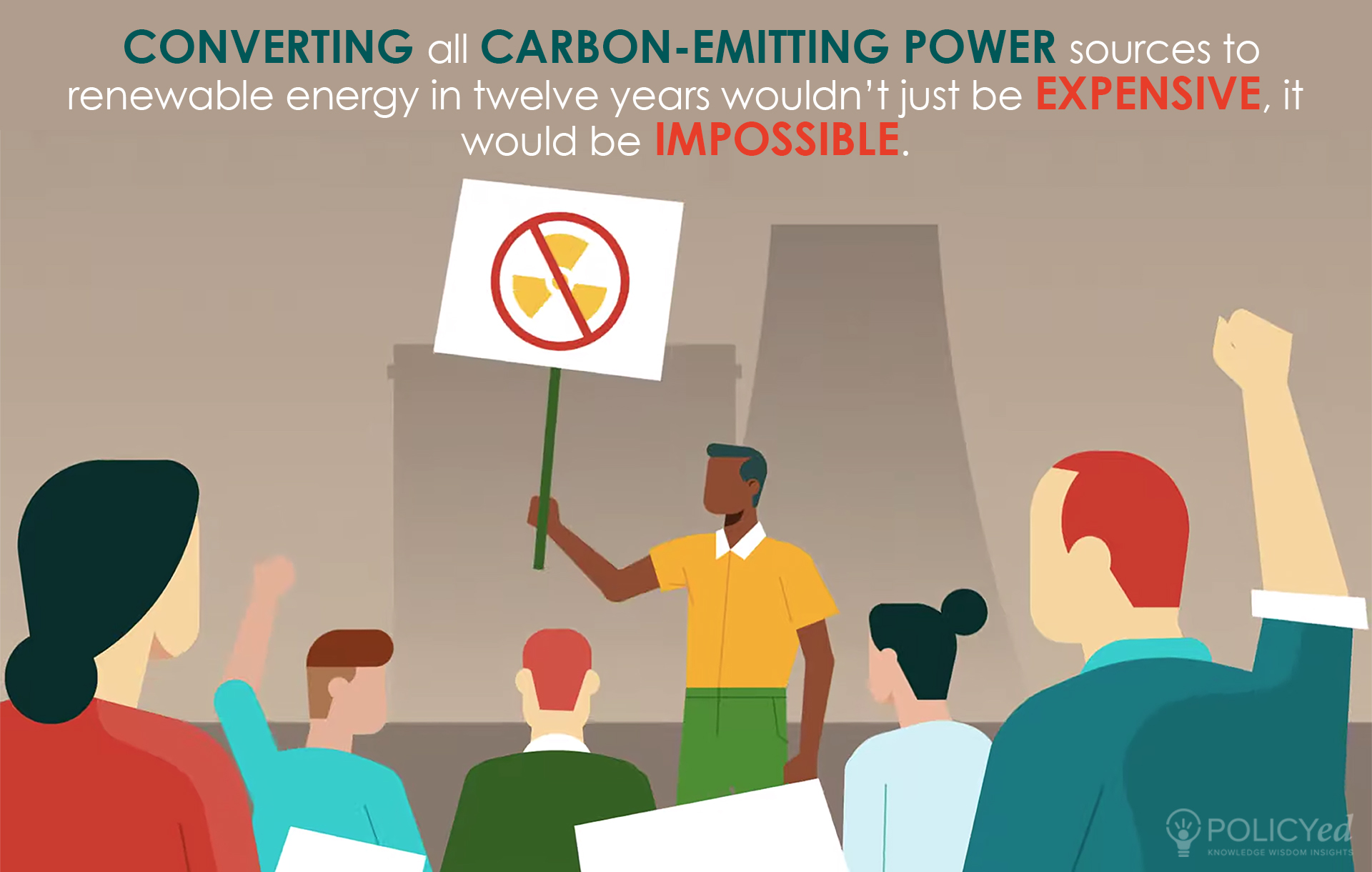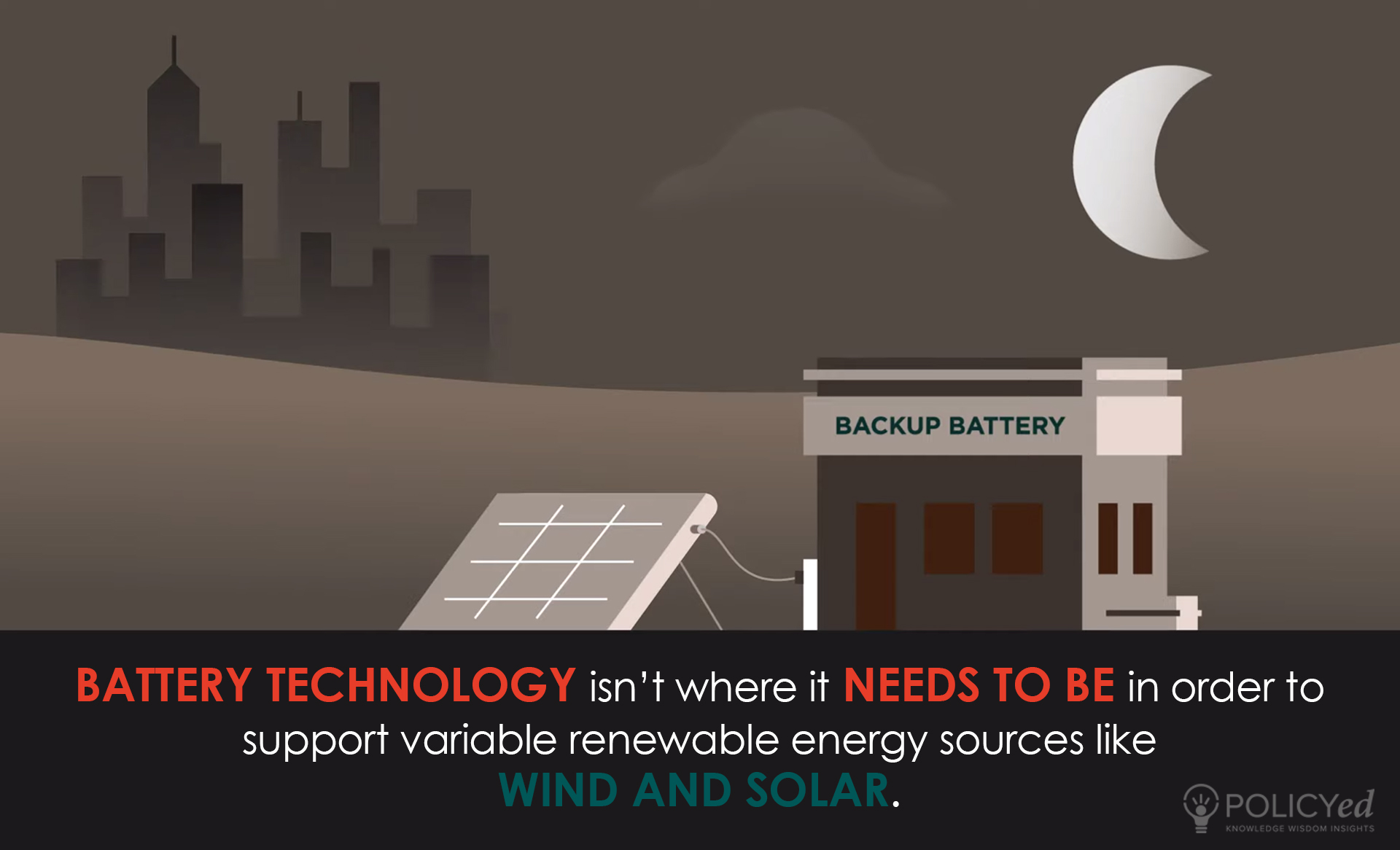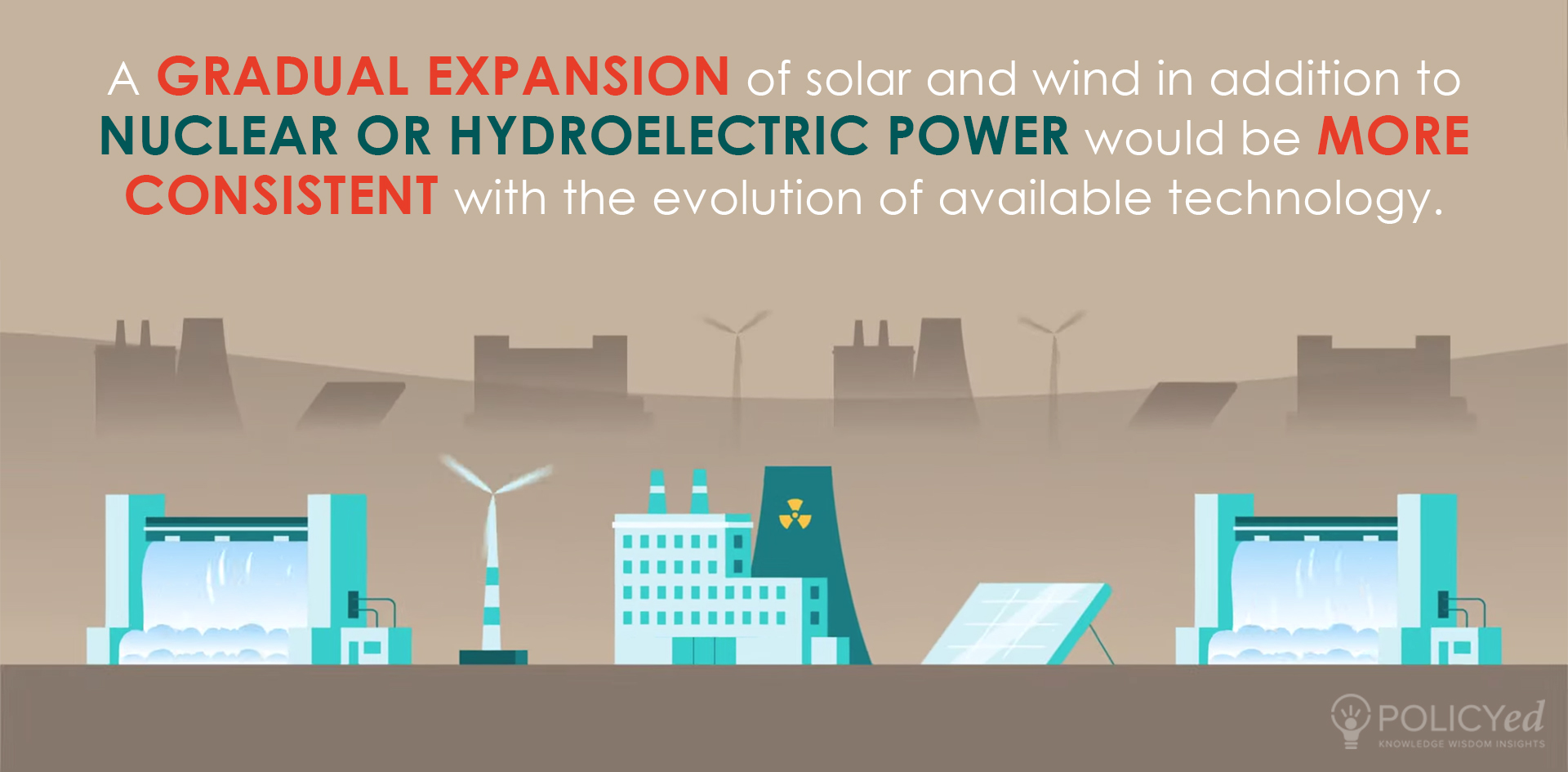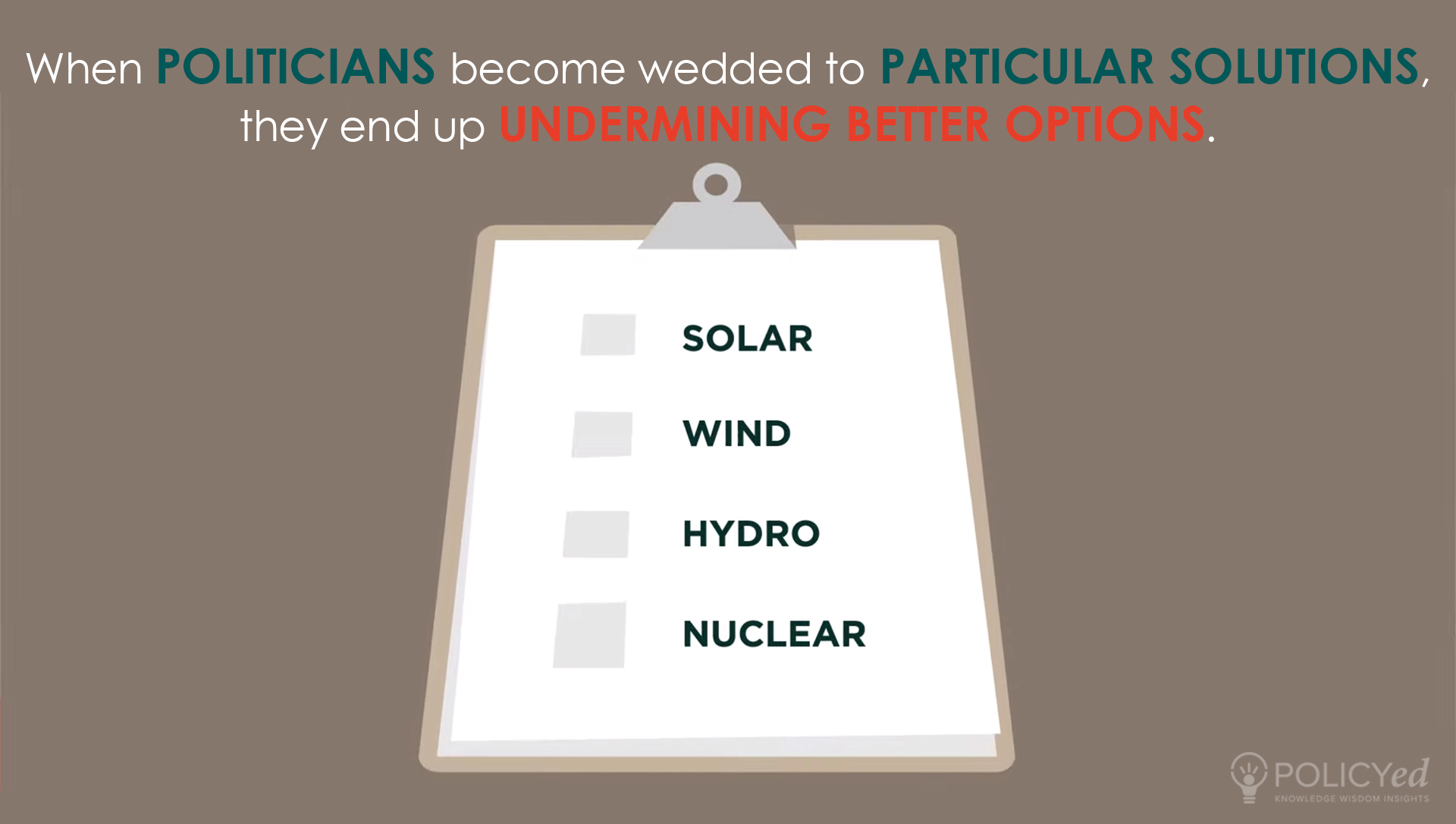Key Facts
An Unlikely Solution
The Green New Deal’s goal of converting all carbon-emitting power sources to renewable energy in twelve years is simply not attainable. It would involve shutting down every natural gas and coal plant and replacing them with wind, solar, and battery storage. While it is an admirable goal, the cost would total trillions of dollars.
Expanding Low-Carbon Energy Production
Instead of prematurely retiring or preventing the construction of new zero-carbon energy sources, we should consider investing in nuclear power or additional hydroelectric power generation. Reducing carbon emissions would be much less costly if the United States leveraged existing zero-carbon sources of electricity.
Picking Effective Solutions
Identifying wind and solar power as the only acceptable sources of zero-carbon electricity energy generation prevents the adoption of more cost-effective options or avenues of generating power. Prematurely shutting down nuclear power plants often leads to short- or long-term increases in carbon emissions, or to higher costs for similar carbon-emission outcomes.

